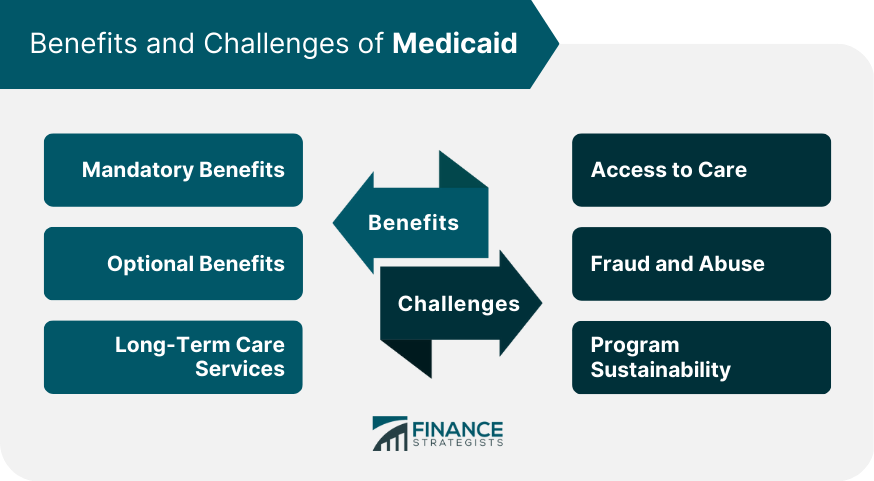
Medicaid Coverage Confusion Redeterminations Explained
Medicaid coverage confusion redeterminations are a major headache for many Americans. Navigating the complexities of eligibility, renewals, and the often-confusing process itself can be incredibly stressful. This post aims to cut through the jargon and provide a clear, concise understanding of Medicaid redeterminations, helping you feel more confident in tackling this crucial aspect of healthcare access.
We’ll explore the process step-by-step, address common misconceptions, and offer practical advice to help you successfully navigate redeterminations. Whether you’re facing a renewal, worried about changes in your income, or simply want to understand the system better, this guide is designed to empower you.
Understanding Medicaid Redeterminations
Navigating the world of Medicaid can be confusing, especially when it comes to redeterminations. These periodic reviews are essential to ensure that individuals continue to meet the eligibility requirements for coverage. Understanding the process, timelines, and criteria involved can significantly reduce stress and potential disruptions to healthcare access.
The Medicaid Redetermination Process
Medicaid redeterminations are periodic reviews conducted by state Medicaid agencies to verify that recipients still meet the program’s eligibility criteria. This process ensures that benefits are allocated efficiently and that those who genuinely need assistance continue to receive it. The process typically involves submitting updated information about your income, household size, and other relevant factors. Failure to provide the necessary information or demonstrating a change in circumstances that renders you ineligible can lead to a loss of coverage.
Eligibility Criteria for Continued Coverage
Eligibility for continued Medicaid coverage depends on several factors, primarily income and household size. Each state has its own specific income limits and asset tests, which determine whether an individual or family qualifies. Other factors, such as age, disability status, pregnancy, and citizenship, also play a role. It’s crucial to check your state’s Medicaid website for the most up-to-date and precise eligibility guidelines.
For example, a family of four might have an income limit of $30,000 annually in one state, while the limit might be $35,000 in another. These differences highlight the importance of consulting your specific state’s guidelines.
Common Reasons for Medicaid Redetermination, Medicaid coverage confusion redeterminations
Several circumstances can trigger a Medicaid redetermination. These include changes in income (such as job loss or a salary increase), changes in household size (such as a marriage or the birth of a child), or changes in disability status. A recipient might also be selected for a random review, even if there have been no reported changes in their circumstances.
For instance, a person who experiences a job loss and a subsequent decrease in income will likely need to update their information to maintain eligibility. Similarly, a person who receives an inheritance exceeding the state’s asset limit may no longer qualify for Medicaid.
Timeline of the Medicaid Redetermination Process
The timeline for a Medicaid redetermination varies by state, but generally involves several steps. The process typically begins with a notice from the state Medicaid agency requesting updated information. Recipients have a specific timeframe to respond and provide the required documentation. Failure to respond within the given timeframe can result in the loss of coverage. After reviewing the submitted information, the agency makes a determination about continued eligibility.
The entire process can take several weeks or even months, depending on the complexity of the case and the agency’s workload.
Steps Involved in a Medicaid Redetermination
| Step | Description | Timeline | Required Documentation |
|---|---|---|---|
| 1. Notice of Redetermination | The state Medicaid agency sends a notice informing the recipient of the need for a redetermination. | Typically, a few months before the renewal date. | None initially; the notice itself initiates the process. |
| 2. Information Gathering | The recipient gathers necessary information and documents to demonstrate continued eligibility. | Variable, depending on the complexity of the situation; usually several days to a few weeks. | Proof of income (pay stubs, tax returns), proof of residency, household size documentation (birth certificates, marriage certificates), and other documentation as requested by the state. |
| 3. Submission of Documentation | The recipient submits the required documentation to the Medicaid agency. | Usually within a specified timeframe (e.g., 30 days) from the date of the notice. | Same as Step 2. |
| 4. Agency Review and Decision | The Medicaid agency reviews the submitted documentation and makes a determination regarding continued eligibility. | Variable, depending on the agency’s workload; can take several weeks. | None; the agency makes the decision based on the submitted documentation. |
Sources of Confusion Regarding Medicaid Redeterminations

Source: financestrategists.com
Navigating the Medicaid redetermination process can be incredibly frustrating, even for those who are well-versed in bureaucratic procedures. The complexity of eligibility requirements, coupled with frequent changes in state-specific rules and a lack of clear, consistent communication, often leads to significant confusion and anxiety. This post aims to shed light on some common sources of this confusion.The impact of changes in income or household composition on eligibility is a major source of difficulty.
Many people mistakenly believe that a small change in income won’t affect their Medicaid status, leading to unexpected loss of coverage. Similarly, changes in family structure, such as marriage, divorce, or the birth of a child, can significantly alter eligibility, often resulting in a need for immediate redetermination. Understanding how these factors interact with income thresholds and asset limits is crucial, but the specific calculations can be opaque and challenging to decipher.
Misconceptions About Medicaid Redeterminations
A common misconception is that the redetermination process is straightforward and easily navigable. In reality, it often involves complex paperwork, stringent deadlines, and potentially confusing interactions with state agencies. Many individuals believe their current coverage is guaranteed, overlooking the periodic review requirement inherent in Medicaid. Another frequent misunderstanding is the belief that all states follow the same rules and procedures.
Navigating Medicaid coverage confusion during redeterminations is a real headache, especially when dealing with unexpected medical expenses. If you’re facing carpal tunnel syndrome, for example, the cost of treatment can be significant, so exploring non-surgical options is crucial. Check out this helpful resource on ways to treat carpal tunnel syndrome without surgery to see if you can manage your symptoms effectively and potentially reduce your overall healthcare costs.
Understanding your Medicaid coverage is key to managing these expenses during this stressful redetermination process.
The reality is that significant variations exist across states, leading to inconsistencies in application processes, eligibility criteria, and overall experience. Finally, the terminology itself can be confusing; understanding terms like “renewal,” “redetermination,” and “continuous coverage” is vital but often proves challenging for applicants.
Impact of Income and Household Changes on Eligibility
Changes in income, even seemingly minor ones, can trigger a loss of Medicaid eligibility. For example, a temporary reduction in work hours, a change in job status, or an unexpected medical expense can push an individual above the income threshold. Similarly, changes in household composition, such as a new dependent or a change in marital status, can significantly impact eligibility, as these factors affect the calculation of household income and the number of people covered under a single Medicaid application.
The system often lacks flexibility to account for temporary fluctuations in income or unforeseen circumstances, resulting in individuals losing coverage even if the changes are short-lived.
Challenges in Navigating the Redetermination Process
Navigating the redetermination process presents numerous challenges for many individuals. The application process itself can be cumbersome, requiring the submission of extensive documentation and detailed personal information. Many applicants struggle to understand the complex eligibility requirements and the specific forms required, leading to delays or rejection of their applications. Language barriers, lack of access to reliable internet or transportation, and the sheer volume of paperwork can further complicate the process, especially for individuals with limited resources or disabilities.
Furthermore, communication from state agencies can be unclear or infrequent, leaving applicants uncertain about the status of their application and unsure of how to address any issues that arise.
Variations in Redetermination Processes Across States
Medicaid is a jointly funded federal and state program, meaning that each state administers its own Medicaid program with varying eligibility criteria and redetermination processes. This leads to significant differences in the complexity of the application process, the frequency of redeterminations, and the level of support available to applicants. Some states offer online portals and robust customer service support, while others rely on paper applications and have limited resources available to assist applicants.
These inconsistencies make it challenging for individuals to understand and navigate the system, especially if they move to a different state or have experience with Medicaid in another state.
Frequently Asked Questions about Medicaid Redeterminations
Many questions arise during the Medicaid redetermination process. Here are some frequently asked questions and their concise answers:
- Q: How often do I need to renew my Medicaid coverage? A: The frequency of redetermination varies by state, but it’s typically done annually or every few years.
- Q: What happens if I miss the deadline to renew my Medicaid coverage? A: Missing the deadline may result in a lapse in coverage, and you may need to reapply.
- Q: What documents do I need to provide for my Medicaid redetermination? A: Required documents vary by state but typically include proof of income, identity, residency, and household composition.
- Q: What if my income changes after I’ve submitted my renewal application? A: You should immediately notify your state Medicaid agency of any income changes.
- Q: Where can I find more information about Medicaid redetermination in my state? A: Contact your state’s Medicaid agency directly or visit their website.
Impact of the Redetermination Process on Individuals and Families
Navigating the Medicaid redetermination process can be incredibly stressful for individuals and families. The potential consequences of losing coverage are significant and far-reaching, impacting not only access to healthcare but also overall financial stability and well-being. Understanding these potential impacts is crucial for effective advocacy and support.
Potential Consequences of Losing Medicaid Coverage
Losing Medicaid coverage can lead to a cascade of negative consequences. Without access to affordable healthcare, individuals may delay or forgo necessary medical care, leading to worsening health conditions and potentially higher healthcare costs in the long run. Preventive care, like annual checkups and screenings, becomes inaccessible, increasing the risk of developing serious, and often more expensive-to-treat, illnesses.
For families, the loss of a parent’s or child’s Medicaid coverage can create significant financial strain, forcing difficult choices between paying for healthcare and meeting other essential needs. This can lead to increased debt, housing instability, and food insecurity.
Available Support Services During Redetermination
Fortunately, several support services are available to help individuals navigate the redetermination process. Many states offer assistance programs that provide guidance on completing the renewal application, appealing a denial, and finding affordable healthcare options. These programs often include case management services, which can help individuals connect with other resources such as financial assistance programs, transportation assistance, and community health clinics.
Nonprofit organizations and advocacy groups also play a vital role, providing information, support, and assistance to individuals throughout the process. These organizations often offer workshops, educational materials, and one-on-one assistance.
Examples of How Loss of Medicaid Coverage Impacts Healthcare Access
The loss of Medicaid coverage directly impacts access to healthcare in numerous ways. Consider a single mother with two children who relies on Medicaid for their healthcare needs. If her coverage is terminated, she may struggle to afford routine checkups, vaccinations, or prescription medications. A child with asthma might go without their inhaler, leading to potentially life-threatening respiratory issues.
An adult with diabetes might delay filling their insulin prescription, resulting in serious health complications. Without coverage, individuals may avoid seeking necessary medical care until their conditions become severe emergencies, leading to more expensive and intensive treatment in the long run.
Financial Implications of Losing Medicaid Coverage
The financial burden of losing Medicaid coverage can be overwhelming. Medical bills can quickly accumulate, leading to significant debt. This can result in difficulty paying rent or mortgage, buying groceries, or paying for transportation. Many individuals facing this situation may resort to borrowing money from family or friends, taking out high-interest loans, or even foregoing essential necessities to pay medical bills.
For families already struggling financially, the loss of Medicaid can push them into a cycle of poverty and debt, with long-term implications for their financial well-being.
Possible Outcomes of a Medicaid Redetermination
The following flowchart illustrates the potential outcomes:[Diagram Description: A simple flowchart showing two main branches after the “Medicaid Redetermination Application” box. The top branch, labeled “Application Approved,” leads to a box labeled “Continued Medicaid Coverage.” The bottom branch, labeled “Application Denied,” leads to a box labeled “Appeal Process.” From the “Appeal Process” box, there are two more branches: one leading to a box labeled “Appeal Approved (Continued Coverage)” and another leading to a box labeled “Appeal Denied (Loss of Coverage).”]
Improving the Medicaid Redetermination Process: Medicaid Coverage Confusion Redeterminations

Source: substackcdn.com
The current Medicaid redetermination process leaves much to be desired. Confusion and frustration are widespread, leading to missed deadlines, lost coverage, and significant hardship for vulnerable individuals and families. Improving this process requires a multi-pronged approach focusing on clearer communication, streamlined applications, effective technology integration, and robust support systems. The following recommendations aim to address these critical areas.
Clarifying Communication Surrounding Redeterminations
Clear and concise communication is paramount. The current materials often use complex jargon and fail to adequately explain the process in plain language. We need simplified, easily digestible information delivered through multiple channels. This includes providing multilingual materials, using visual aids like infographics, and offering short, informative videos that explain the process step-by-step. Crucially, all communication should be personalized, referencing the individual’s specific circumstances and deadlines.
This tailored approach ensures that individuals understand exactly what is expected of them and when. For example, a text message reminder a week before a deadline would be more effective than a generic letter mailed weeks in advance.
Simplifying the Application and Renewal Process
The application and renewal process itself is often overly cumbersome. Streamlining this process is crucial. This involves reducing the number of forms, simplifying the questions, and making the process entirely online, if possible. Online portals should be user-friendly and accessible to individuals with limited technological skills. Pre-filling forms with existing data whenever possible would significantly reduce the burden on applicants.
Furthermore, implementing a system that allows applicants to track their application status online would increase transparency and reduce anxiety. Imagine a system where an applicant could log in and see exactly where their application is in the process, eliminating the need for constant phone calls to inquire about the status.
The Role of Technology in Improving Efficiency and Transparency
Technology can revolutionize the redetermination process. Automated systems can flag potential issues, such as missing information or inconsistencies, early in the process, allowing for timely intervention. Online portals can provide secure access to applications, documents, and updates, promoting transparency and accountability. Artificial intelligence (AI) can be used to analyze applications and identify individuals who may require additional support.
For instance, AI could identify applicants with language barriers and automatically route their applications to a translator. This improved efficiency would lead to faster processing times and reduce the administrative burden on both applicants and caseworkers.
Improving Outreach and Support
Proactive outreach is essential. Instead of relying solely on applicants to initiate contact, Medicaid agencies should actively reach out to individuals approaching their redetermination deadlines. This outreach could involve phone calls, text messages, emails, and even home visits in certain cases. Furthermore, providing dedicated support services, including assistance with completing forms, navigating the online portal, and addressing any questions or concerns, is vital.
This might include establishing partnerships with community organizations that can offer in-person assistance to individuals who need it. For example, local libraries or community centers could serve as hubs for assistance with the online application process.
Policy Changes to Reduce Confusion and Improve Fairness
Several policy changes could significantly improve the redetermination process. A crucial step is to extend the deadlines for renewal, providing more time for individuals to submit the necessary documentation. Another important change is to allow for automatic renewal for individuals who consistently meet the eligibility criteria. This would reduce the administrative burden and ensure continuous coverage for those who qualify.
Finally, strengthening protections against wrongful denials and ensuring a fair and transparent appeals process are essential to protecting the rights of applicants.
Navigating Medicaid coverage redeterminations is a real headache, especially with all the changes happening. I’ve been researching options for affordable primary care, and stumbled upon the convenience of humana centerwell primary care centers walmart , which might offer some clarity on pricing and coverage. Understanding these details is crucial for those worried about losing their Medicaid during these redeterminations.
- Extend redetermination deadlines.
- Implement automatic renewal for eligible individuals.
- Strengthen protections against wrongful denials.
- Establish a streamlined and transparent appeals process.
- Increase funding for outreach and support services.
- Standardize application forms and processes across states.
- Require clear and concise communication in multiple languages.
Illustrative Case Studies
Understanding the Medicaid redetermination process is best achieved through examining real-world scenarios. The following case studies illustrate both successful and challenging experiences, highlighting the complexities individuals face.
Successful Navigation of the Redetermination Process
Maria Garcia, a single mother of two, received her Medicaid redetermination notice. She was initially apprehensive, but she carefully reviewed the paperwork and gathered all the necessary documents, including proof of income, residency, and her children’s birth certificates. She utilized the online portal to submit her information and followed up with a phone call to confirm receipt. Within a few weeks, she received confirmation that her Medicaid coverage was renewed without issue.
Maria’s proactive approach and diligent documentation ensured a smooth process. Her success underscores the importance of understanding the requirements and acting promptly.
Navigating the complexities of Medicaid coverage redeterminations is already a headache, and the recent news is only adding to my stress. With the confirmation of rfk jr confirmed hhs secretary robert f kennedy jr , I’m wondering what changes we might see in healthcare access. Will this impact the already confusing process of redeterminations? I’m definitely keeping a close eye on how this plays out and how it affects those relying on Medicaid.
Challenges During the Redetermination Process
John Smith, a construction worker who recently experienced a job layoff, faced significant challenges during his redetermination. He struggled to understand the complex forms and deadlines. He missed the initial deadline for submitting his paperwork due to a lack of reliable internet access and transportation difficulties to access necessary services. He eventually contacted the Medicaid office, but navigating the phone system and explaining his situation proved difficult.
The delay in processing his application resulted in a temporary lapse in his coverage, leading to significant financial strain and stress. This case highlights the need for accessible resources and simplified application processes.
Challenges Faced by Individuals with Limited English Proficiency
The redetermination process presents significant hurdles for individuals with limited English proficiency (LEP). Imagine Elena Ramirez, a recent immigrant who speaks only Spanish. Navigating the English-only forms and online portal is nearly impossible for her. Even if she finds a translator, understanding the nuances of the application and potential appeals process remains challenging. The lack of translated materials and multilingual support staff creates significant barriers, leading to potential delays or denials of coverage.
This situation underscores the critical need for multilingual resources and culturally competent assistance.
Impact of Disability or Health Conditions
Individuals with disabilities or chronic health conditions often face additional obstacles during redetermination. Consider David Miller, who suffers from severe arthritis and limited mobility. Gathering the necessary documentation, such as medical records, requires significant effort and coordination. The process itself can be physically and mentally exhausting, further exacerbating his health challenges. The lack of accommodations for individuals with disabilities hinders their ability to successfully navigate the system, emphasizing the need for accessible and supportive processes.
Fictional Scenario: From Notification to Determination
Sarah Jones received her Medicaid redetermination notice in the mail. The notice was in English, and although Sarah was fluent, she found some of the terminology confusing. She accessed the online portal but struggled to upload some documents due to technical issues. After several attempts, she contacted the Medicaid help line and received assistance. A representative helped her troubleshoot the technical problems and clarified some of the instructions.
Sarah successfully submitted her application on time. However, a week later, she received a request for additional information. She promptly responded, providing the missing documents. Ultimately, after a few weeks, Sarah received confirmation that her Medicaid coverage had been renewed. This scenario illustrates the potential challenges, but also the possibility of overcoming them through proactive communication and utilizing available resources.
Closing Notes
Successfully navigating Medicaid redeterminations requires understanding the process, being prepared with the necessary documentation, and knowing where to find support. While the system can be confusing, armed with the right information and a proactive approach, you can significantly increase your chances of maintaining crucial healthcare coverage. Remember, seeking assistance from relevant organizations and advocating for yourself is key. Don’t hesitate to reach out for help – you’re not alone in this.
FAQ
What happens if I miss the deadline for my Medicaid redetermination?
Missing the deadline may result in a temporary or permanent loss of coverage. Contact your state Medicaid agency immediately to explain the situation and explore options for reinstatement.
Can I appeal a Medicaid redetermination decision?
Yes, you typically have the right to appeal a decision you disagree with. The appeal process varies by state, so check your state’s Medicaid website for specific instructions.
What if my income fluctuates throughout the year?
Report any significant changes in income to your state Medicaid agency promptly. They may adjust your coverage based on your updated financial information.
Where can I find help with the Medicaid redetermination process?
Many organizations offer assistance with Medicaid applications and redeterminations. Contact your local health department, a community health center, or a legal aid organization for support.





